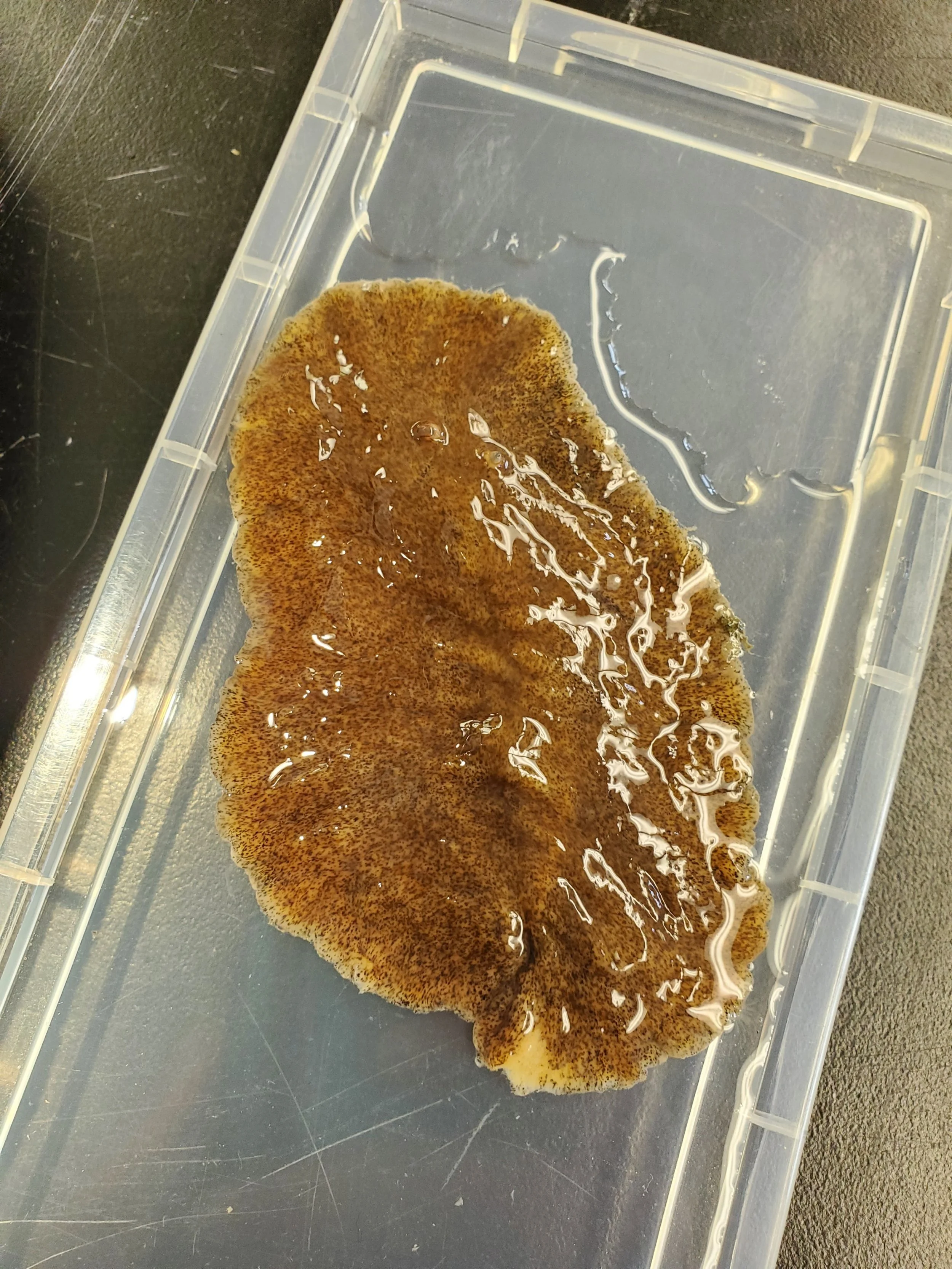Flatworms (Order: Polycladida)
Notocomplana sp. (possibly Notocomplana acticola) on coralline algae (photo credit: Katie Corliss)
Large leaf worm (photo credit: Katie Corliss)
Description: Flatworms are, you guessed it, flat! They are very thin and oval shaped and move along the substrate like a magic carpet. Instead of magic, they are using thousands of hair-like structures called cilia that cover their underside. There are two main species that are easily identified in the Pacific Northwest. The large leaf worm (Kaburakia excelsa) can range from orange to brown in color and has dark brown spots and lines. They get up to 10 cm long and 7 cm wide! The red saddled flatworm (Notocomplana sanguinea) is gray with a red saddle across the center of its back. They’re much smaller than the large leaf worm, at only 2.5 cm long. Aside from these two species, there are many others but they often require microscopes and examining the internal anatomy of the flatworm to differentiate.
Habitat: They prefer hard substrate to live on like rocks, pilings, mussels, or the bottom of boats. They are often found in the mid to low intertidal zones, sometimes into the subtidal zone. The species mentioned here are frequently found from Alaska to California.
Diet: Don’t underestimate the flatworm’s unassuming body! They’re predators that will eat anything they can fit their pharynx around. The pharynx is a small section of their digestive tract behind the mouth that they will extrude and engulf around their prey to partially digest it before slurping it back up into their body. The common prey to flatworms include mollusks, crustaceans, other worms, and any other invertebrates they can get.
Tide Pool Tidbits:
Flatworms don’t have an anus and spit any waste back out of their mouth.
While they don’t have true eyes, flatworms do have lots of eyespots that are fairly sensitive to light.
References: The New Beachcomber’s Guide to the Pacific Northwest by J Duane Sept, Friends of Netarts Bay



